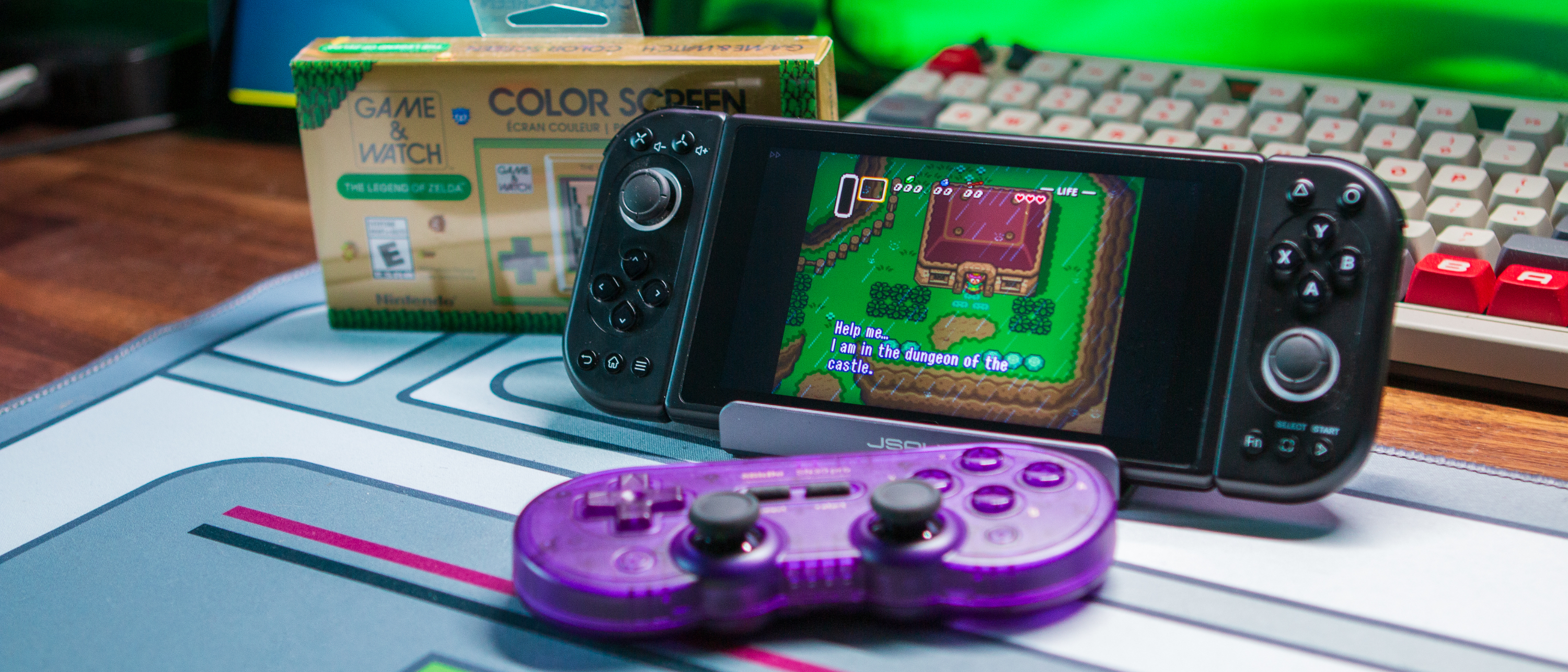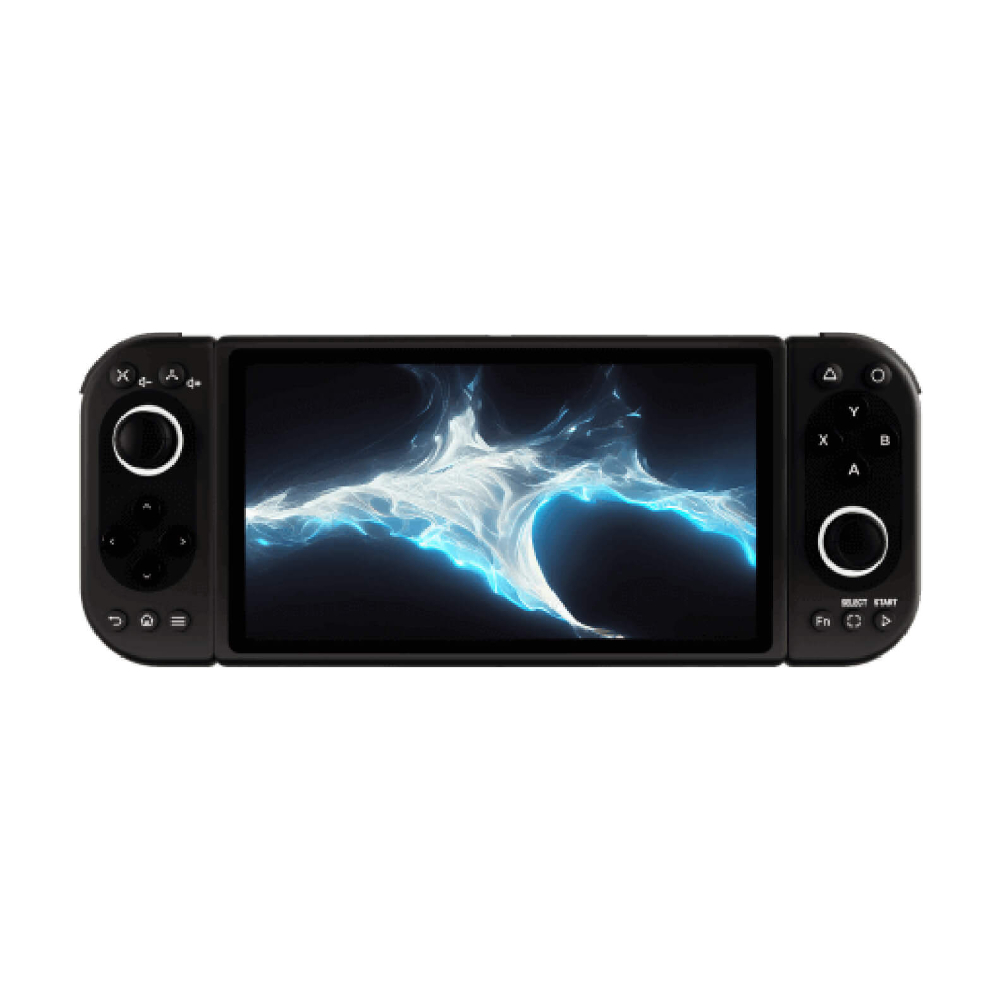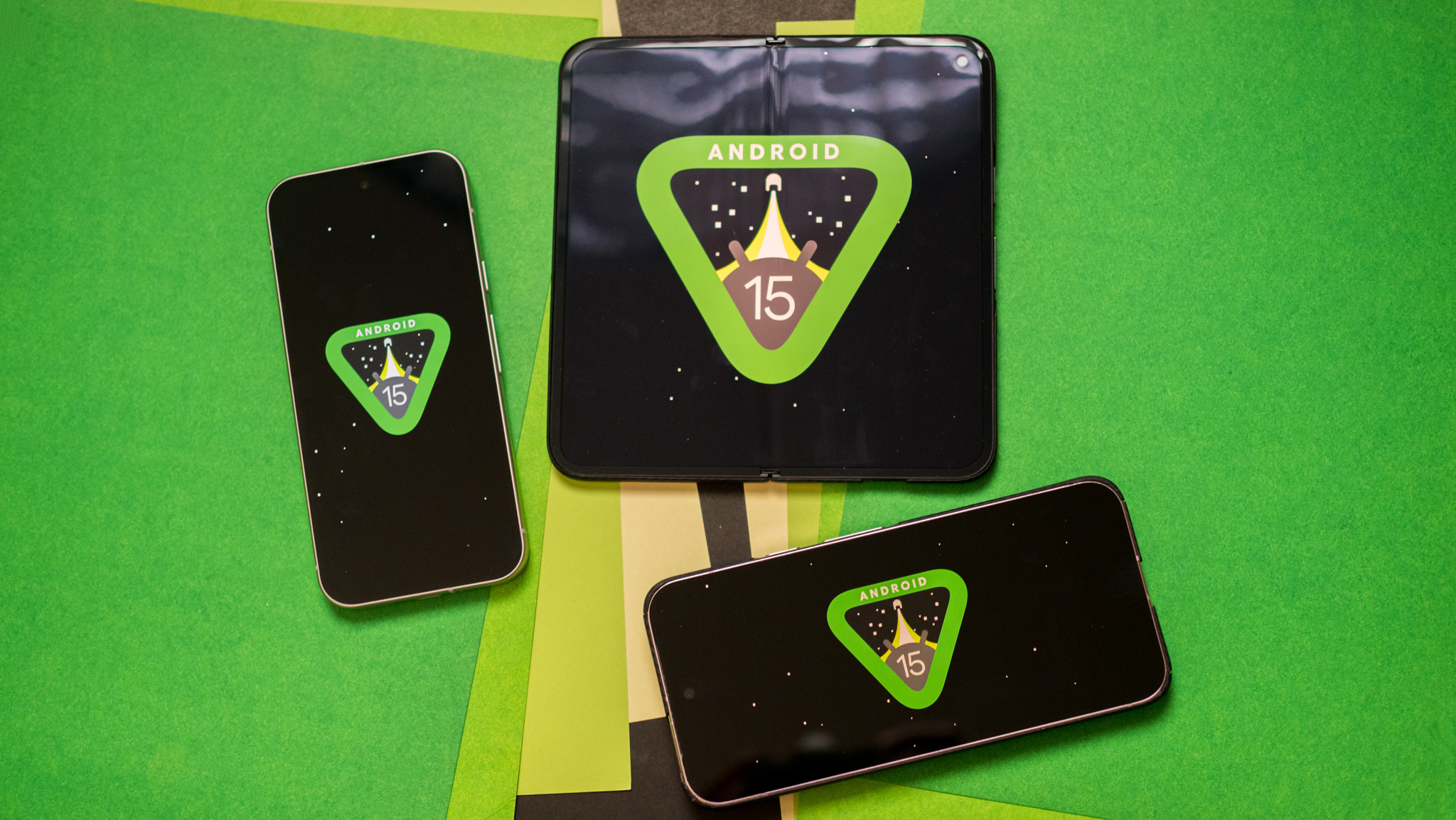Android Central Verdict
On paper, the Pimax Portal is easily one of the most interesting devices to be released in the past year. Not only does it borrow its design from the Nintendo Switch, but, it's also meant to double as a VR headset. The problem is that we're still waiting for the VR headset and accessories to arrive, so until that happens, it's just another gaming handheld.
Pros
- +
Incredibly solid build quality
- +
4K QLED display is gorgeous
- +
More than capable of playing a lot of games
- +
Detachable controllers
- +
Mapping software is fantastic
Cons
- -
Expensive
- -
A lot of uncertainty about the VR aspect
- -
Not very ergonomic
- -
Controller buttons are a bit uncomfortable
Why you can trust Android Central
While my beloved Steam Deck has been great for a lot of things, there's just something about the Android experience that I love. That's where the Pimax Portal comes in, as it was the first dedicated Android gaming handheld that I was able to try out.
It might come as a surprise that Pimax even released an Android handheld, especially considering that the company has been primarily focused on the VR space. But that's part of what makes the Portal so exciting, as Pimax plans to release the Portal View headset. Unfortunately, the headset has been delayed due to the company finding that "its weight isn't distributed well and the comfort can be improved a bit. Also, we found some components are a bit weak if the user is rough with the device."
With that in mind, this review will be solely focused on how the Portal operates as an Android gaming handheld. If and when the redesigned Portal View headset is released, we'll be sure to circle back and update the review.
Pimax Portal: Price and availability
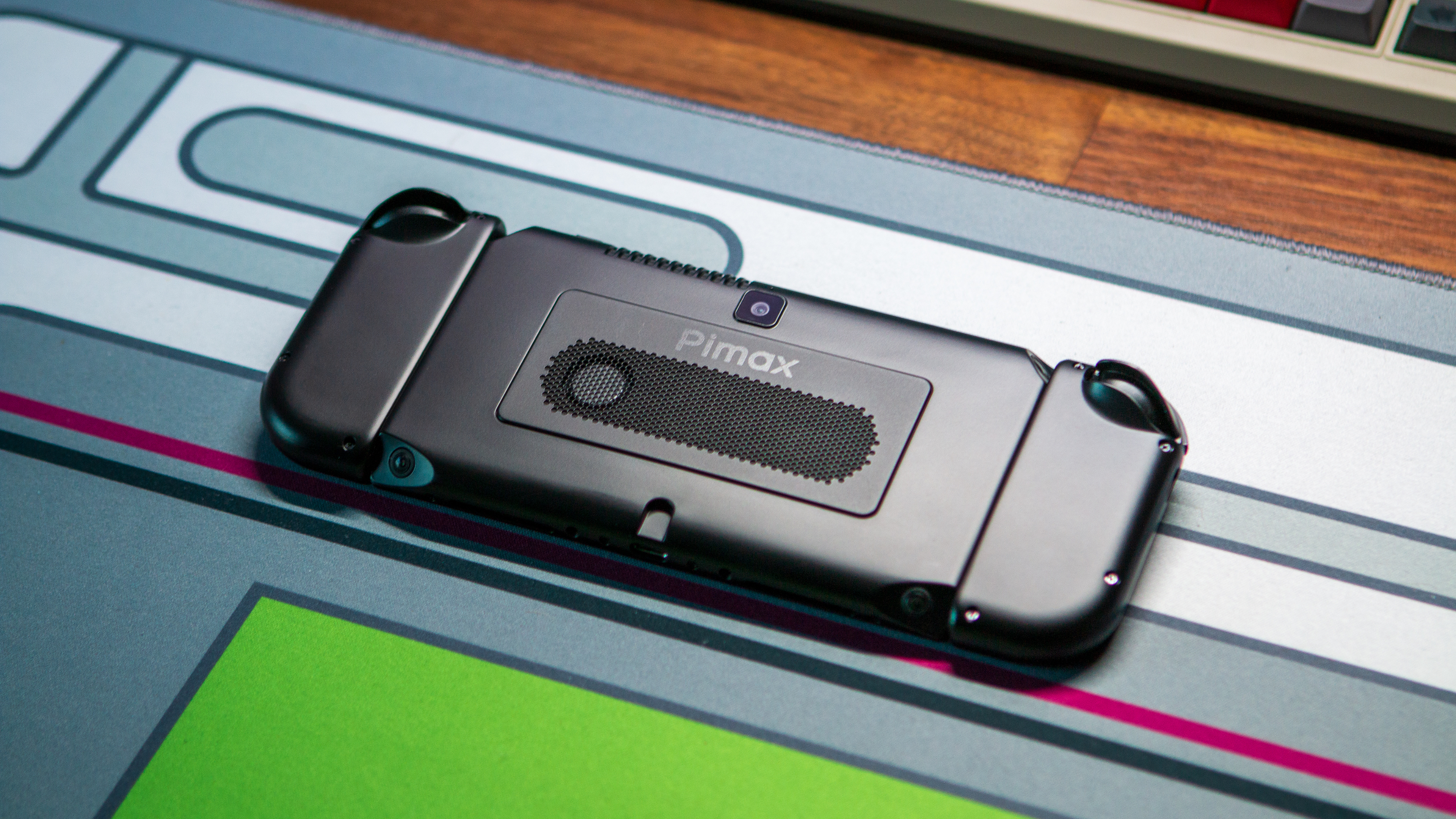
The Pimax Portal was announced in late 2022, with the company simultaneously launching an Indiegogo campaign. Pricing for the Portal starts at $329 for the 4K LCD model and goes up to $399 for the 4K QLED version. However, pricing will jump to either $399 or $549 after the current Indiegogo campaign comes to a conclusion.
You can also spring for the Retro model if you can go without the detachable controllers and lower display resolution.
- Pimax Portal Retro (128GB): $299
- Pimax Portal (128GB): $369
- Pimax Portal (256GB): $399
- Pimax Portal QLED (256GB): $549
Pimax Portal: Design
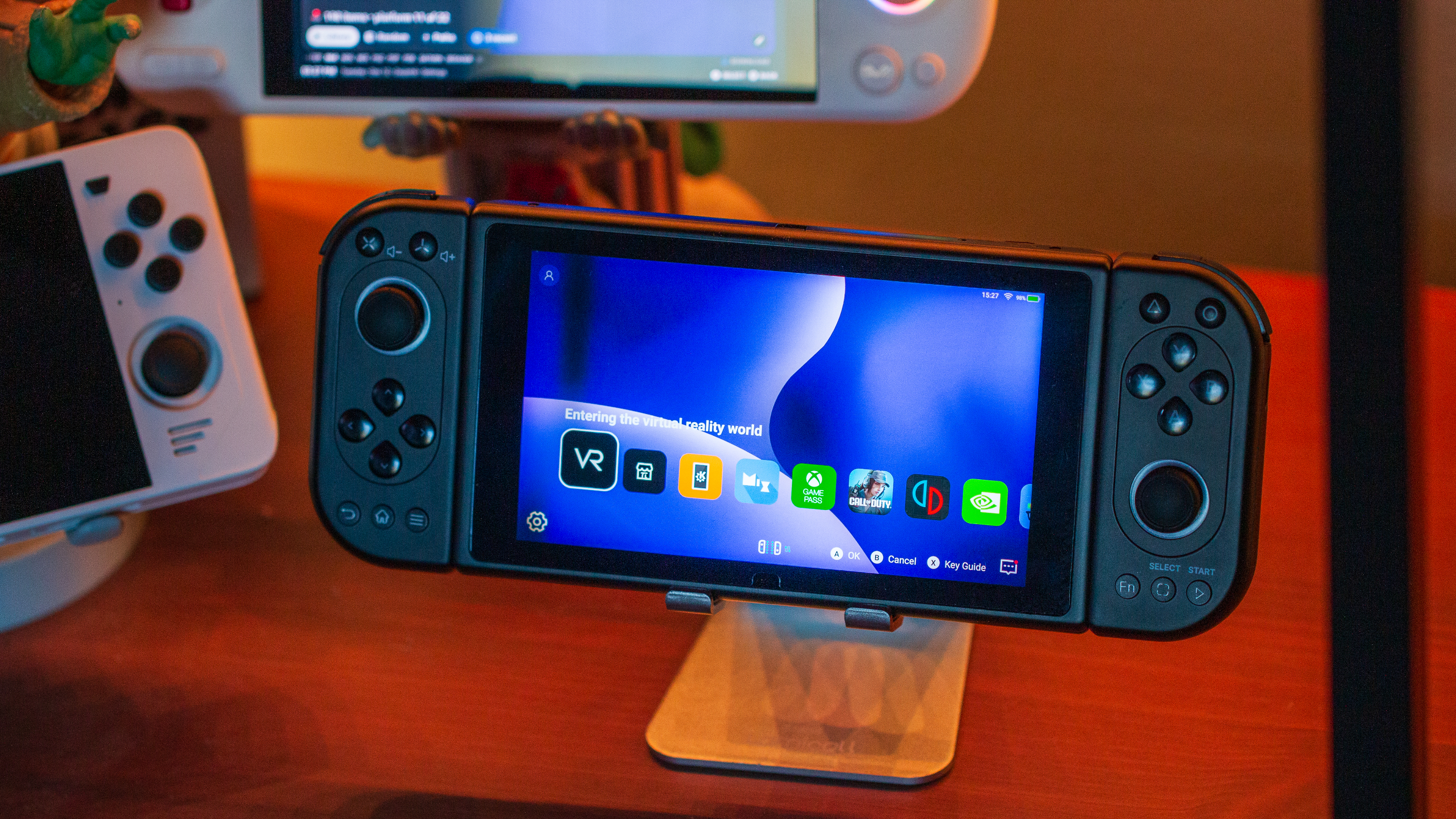
Pimax might have set out to create a unique multi-functional handset, but what it did in the process was release an incredible gaming handheld. Running through the specs, the Portal is powered by the Snapdragon XR2 SoC, paired with 8GB of RAM and 256GB of expandable storage. If the XR2 sounds familiar, it's because that's the same chipset that's being used in the Meta Quest 2 and the Pico 4 headset.
As for the display, there are actually two different versions that you can choose from. Both sport a 5.5-inch screen, but the cheaper version uses an LCD panel with a 1080p resolution and 120Hz refresh rate. However, the top-of-the-line model utilizes a QLED panel with up to a 4K resolution and the same 120Hz refresh rate.
Flanking the display are all of the controls and buttons that you would expect, but there's another exciting aspect — the controllers are removable. It wasn't done to emulate the Switch directly; instead, it provides the controls you'll need when docking the Portal in the headset.
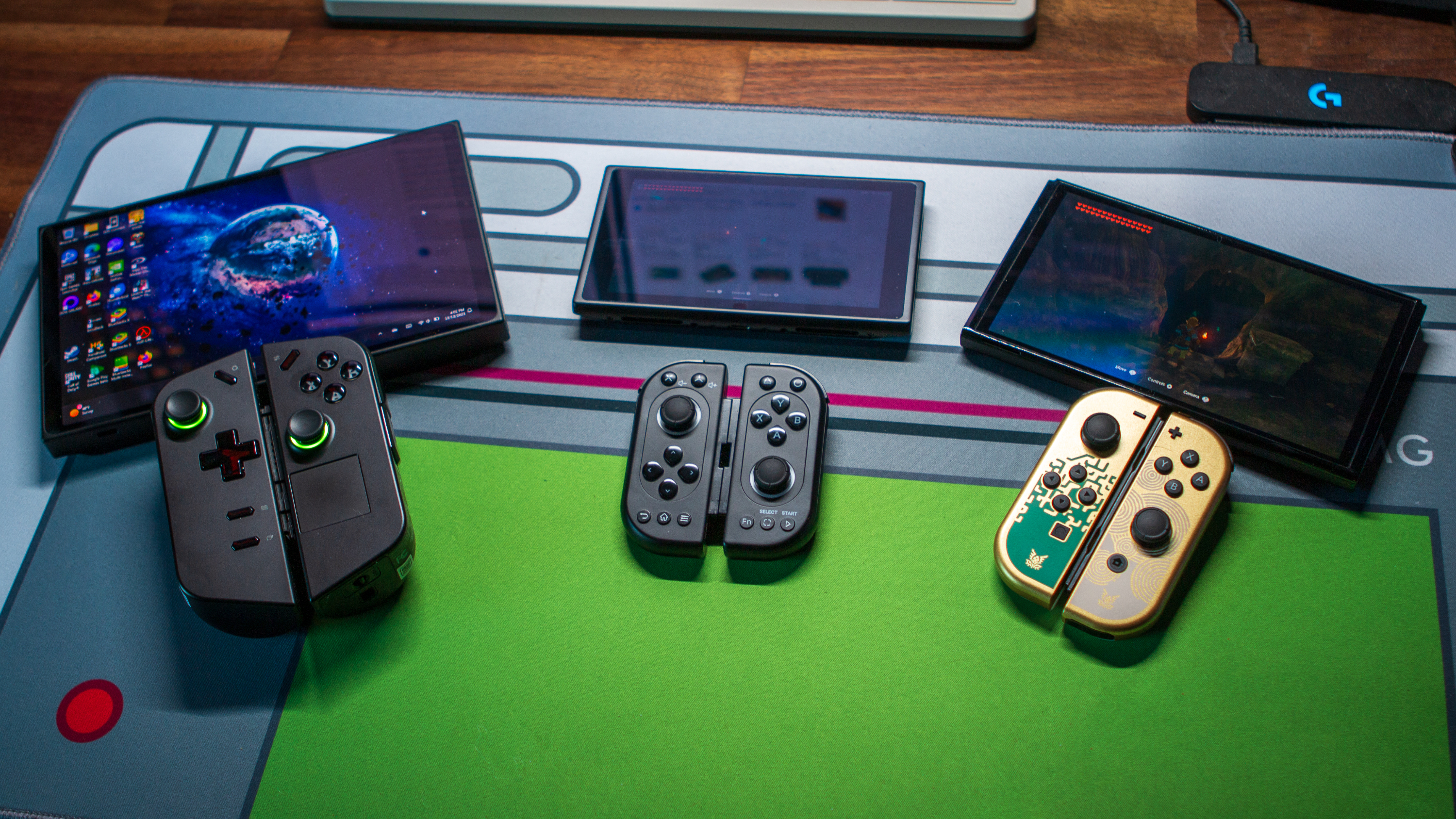
Keeping the controllers in place is a series of very strong magnets, and there's even a warning on the lock screen reminding you not to "pinch your hands." Unlike the Switch and Lenovo Legion Go, there aren't any locking mechanisms or buttons that you need to push to remove either controller. Instead, just tilt them forward or backward, and the magnets will separate.
Something else that's pretty cool about this design is that you won't need something like the Joy-Con Grip. Instead, you can just bring the two sides close to one another, and they will snap into place. It's obviously not the most ergonomic way to play games, but if worse comes to worse, you can always pair a Bluetooth controller if you don't want to worry about your hands cramping up.
Staying with the controllers, Pimax throws pretty much every button imaginable onto the front. This is convenient, but it can get rather frustrating as some functions can only be performed when holding down the Function button.
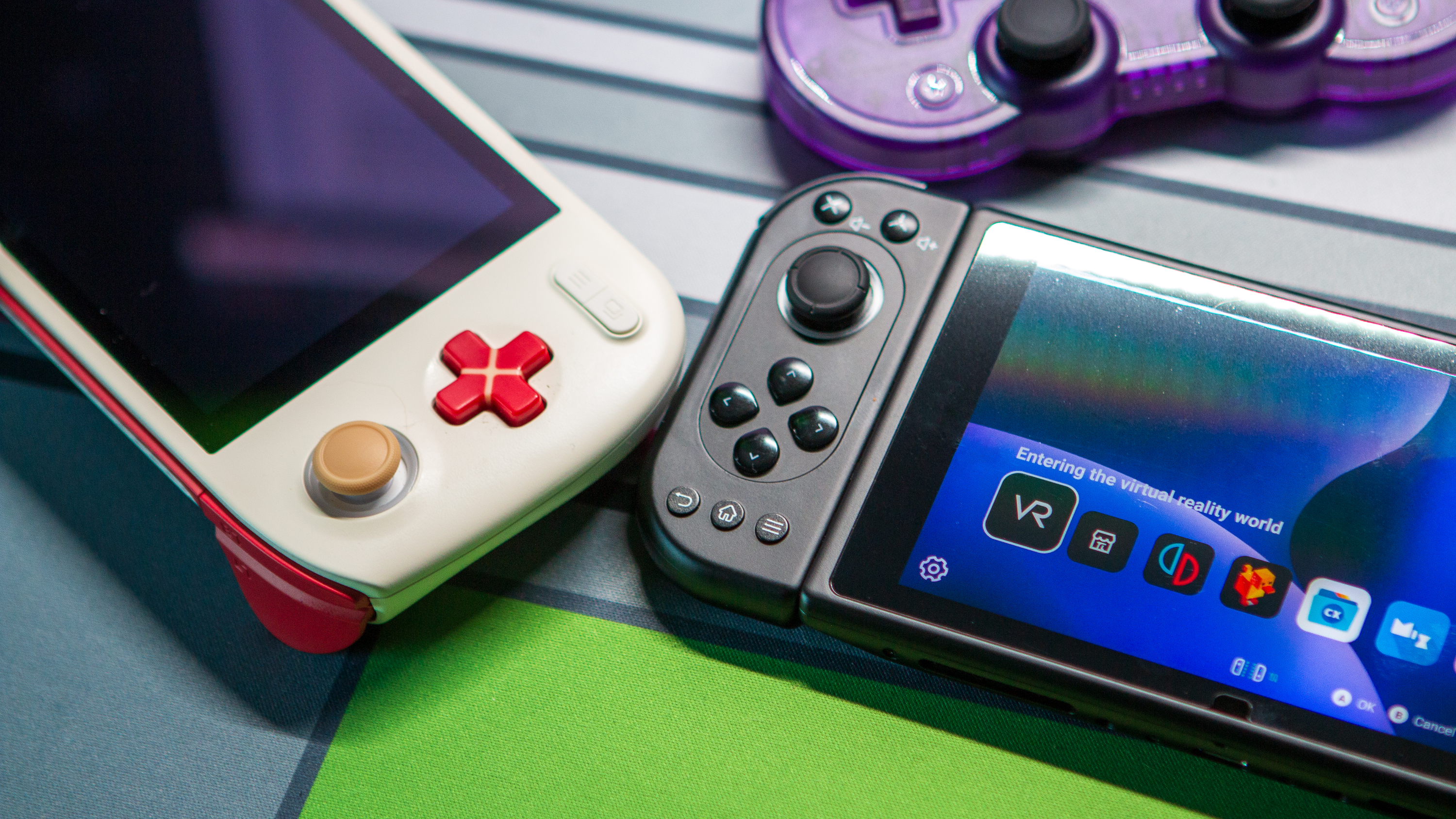
The other problem I keep running into is reaching up to push what my brain associates as the Start button, only to realize it's not. Instead, the Start and Select buttons are in the bottom right corner, while the Home and Back buttons are in the bottom left corner.
Lastly, I want to mention the design of the D-Pad and the ABXY buttons. Instead of using a traditional rounded button, like pretty much every other popular console and controller out there, Pimax opted for a teardrop design. It's not all that bothersome if you're using either analog stick, but as soon as you're playing a fast-paced game, it won't be long before your thumbs start to get a little sore.
Pimax Portal: Gaming and software

Now for the meat and potatoes: performance. Admittedly, the Snapdragon XR2 chip is almost five years old, but even still, I wasn't sure what to expect. Running Geekbench confirms that the Portal is quite a bit underpowered compared to more modern devices like the OnePlus Open (2407 vs. 4855 multi-core.) But that's not necessarily a bad thing, as you don't need the most powerful chip to play many of the best Android games.
Instead, the bigger issue is that the Portal is running Android 10. So, there's a good chance you'll run into problems downloading and installing certain games from the Play Store if those games no longer support this four-year-old version of Android. One example of this was when I tried to play NVIDIA GeForce Now on the Portal, which can be installed but won't actually load anything on the Portal.
| Category | Pimax Portal |
|---|---|
| Display | 5.46-inches |
| Resolution | LCD: 1920 x 1080 / QLED: 3840 x 2160 |
| Refresh Rate | Up to 120Hz |
| Processor | Qualcomm Snapdragon XR2 |
| RAM | 8GB |
| Storage | 128GB / 256GB; expandable via microSD card |
| Connectivity | Wi-Fi 6E, Bluetooth 5.1, USB-C, Micro HDMI (QLED-only) |
| Battery | 4000mAh |
| Weight | 367g |
Because it's running an older version of Android, this means that I'm not able to try to play Switch games via Yuzu. The "cutoff" for being able to use Yuzu is Android 11, but thanks to Huesos_96, a modified version was released that is "tailored for the Portal and its Snapdragon XR2 chip." While it's an inconvenience, all you'll need to do is download the correct APK file and install it onto the Portal.
When Yuzu was finally made available for the Portal, I was ecstatic, but it didn't take long to realize that there was still a lot of work to do. At the time, some games wouldn't play at all, such as The Legend of Zelda: Tears of the Kingdom.
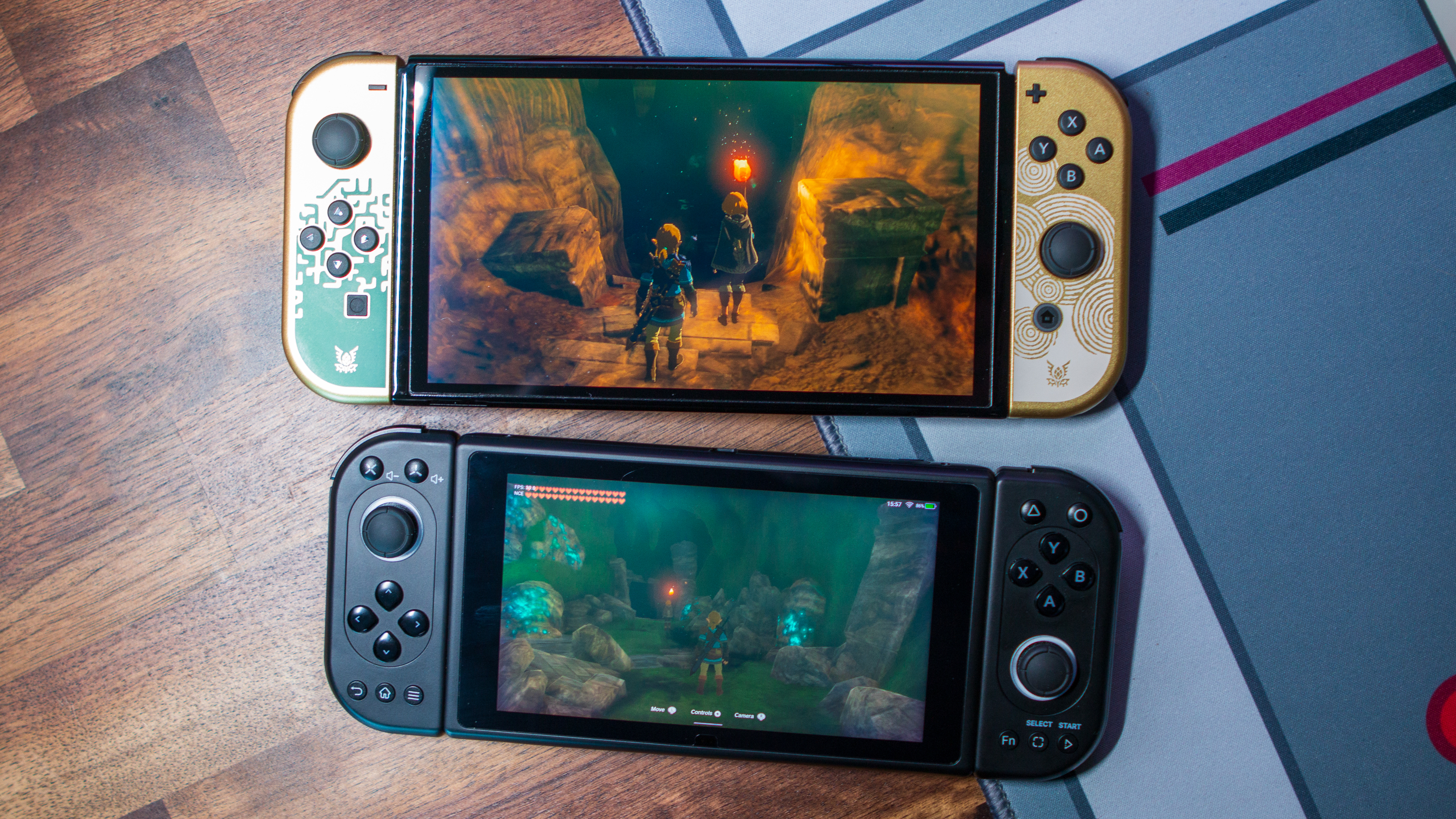
Now, I can get TOTK to run on the Portal, but it's far from a smooth experience, as even at the beginning of the game, it's practically impossible to get a steady 30 frames per second. However, I was surprised to find that besides a few occasional stutters, Super Mario Bros. Wonder runs pretty darn well and never drops below 30fps.
I won't put all of the onus on Pimax here, as Switch emulation on Android is still in its infancy, with updates rolling out all the time. Even when you get everything set up, there's still a good chance that you'll need to tinker around with the settings or install a different GPU driver. For now, that's just the nature of the beast if you want to play your Switch games on Android.
Except for the aforementioned GeForce Now problems, the Portal does a superb job at handling many of my favorite Android games. That includes firing up Xbox Game Pass and jumping into the likes of Starfield or SteamWorld Build.
Where I did run into a few more issues is when various games didn't recognize that there was a controller attached to the Portal. Because the Portal is essentially recognized as a tablet, the games don't know that it has built-in controllers. Thankfully, Pimax thought of this and implemented an option to map on-screen controls to the physical controllers.
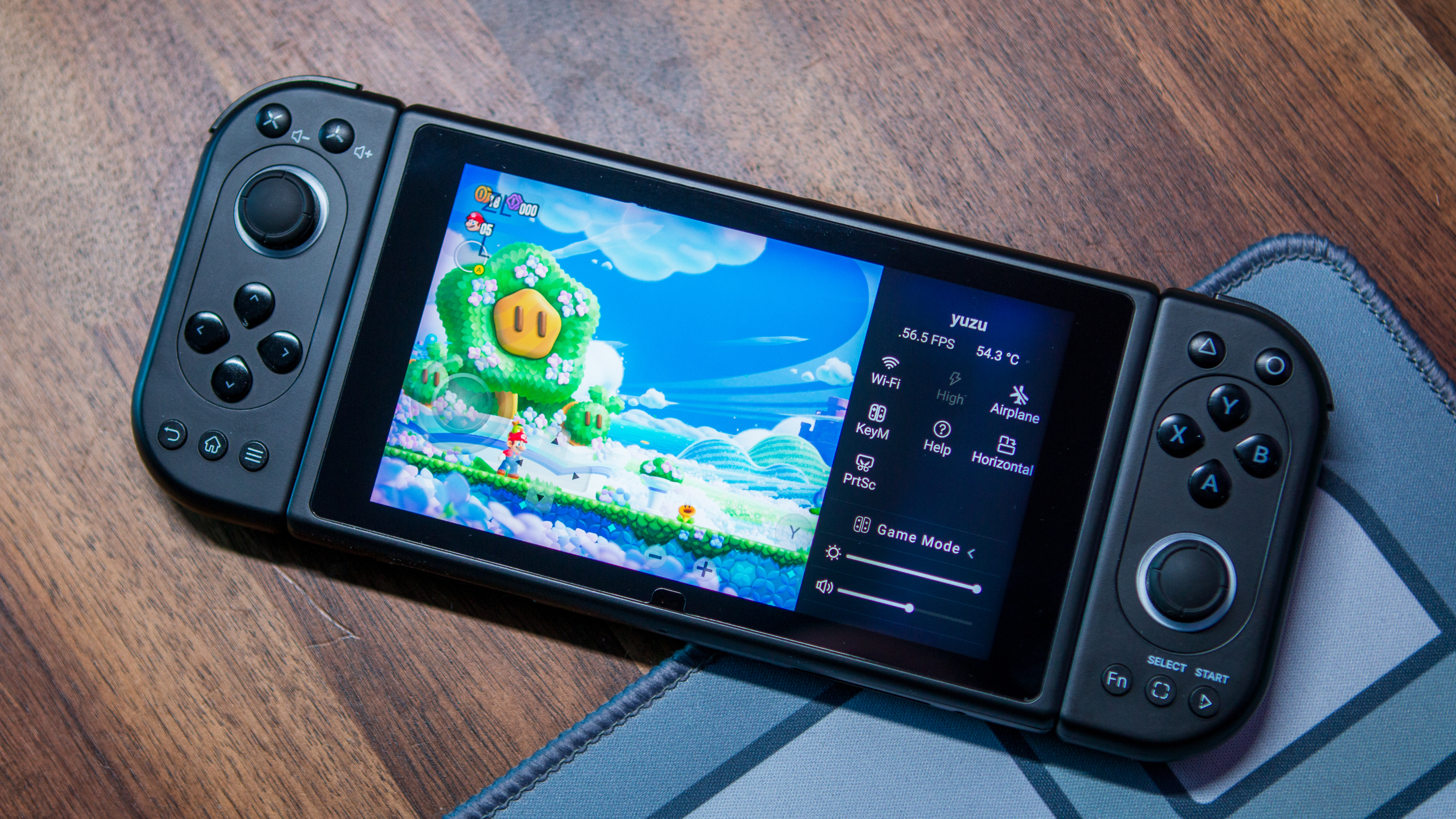
One example of this was Call of Duty: Mobile, which was particularly frustrating as even after mapping the controls, trying to look left and right is downright painful. Instead of just moving the right joystick, the game only recognizes movements in increments. I didn't run into any other games that suffered from these problems, but it's definitely something to keep in mind if you're interested in the Portal.
For the most part, it seems that the software is pretty fleshed out in terms of the settings and features that can be tweaked. Although it's running Android, it's a customized version that is tailored towards what Pimax wants to present. There's even a separate "Pimax Store," but you're required to create an account just to see what's available. Outside of signing up just to see what was offered, I primarily stick to a combination of the Play Store and trusted APK files from Github.
Something else that's a bit odd is that there are actually two different "Settings" apps. There's the native Android Settings app, which includes just about everything you'd expect. Then, Pimax includes a Settings app of its own for the Portal. There's a bit of overlap between the two, but the Pimax Settings includes things like "Performance Management" and the ability to adjust the resolution and refresh rate.
However, when it comes to actual software updates, that's all handled by Pimax's own Settings app. The "Software Updates" section within the Android Settings app has been removed entirely, which is probably for the better but might still cause a bit of confusion.
Pimax Portal: Waiting for the VR headset
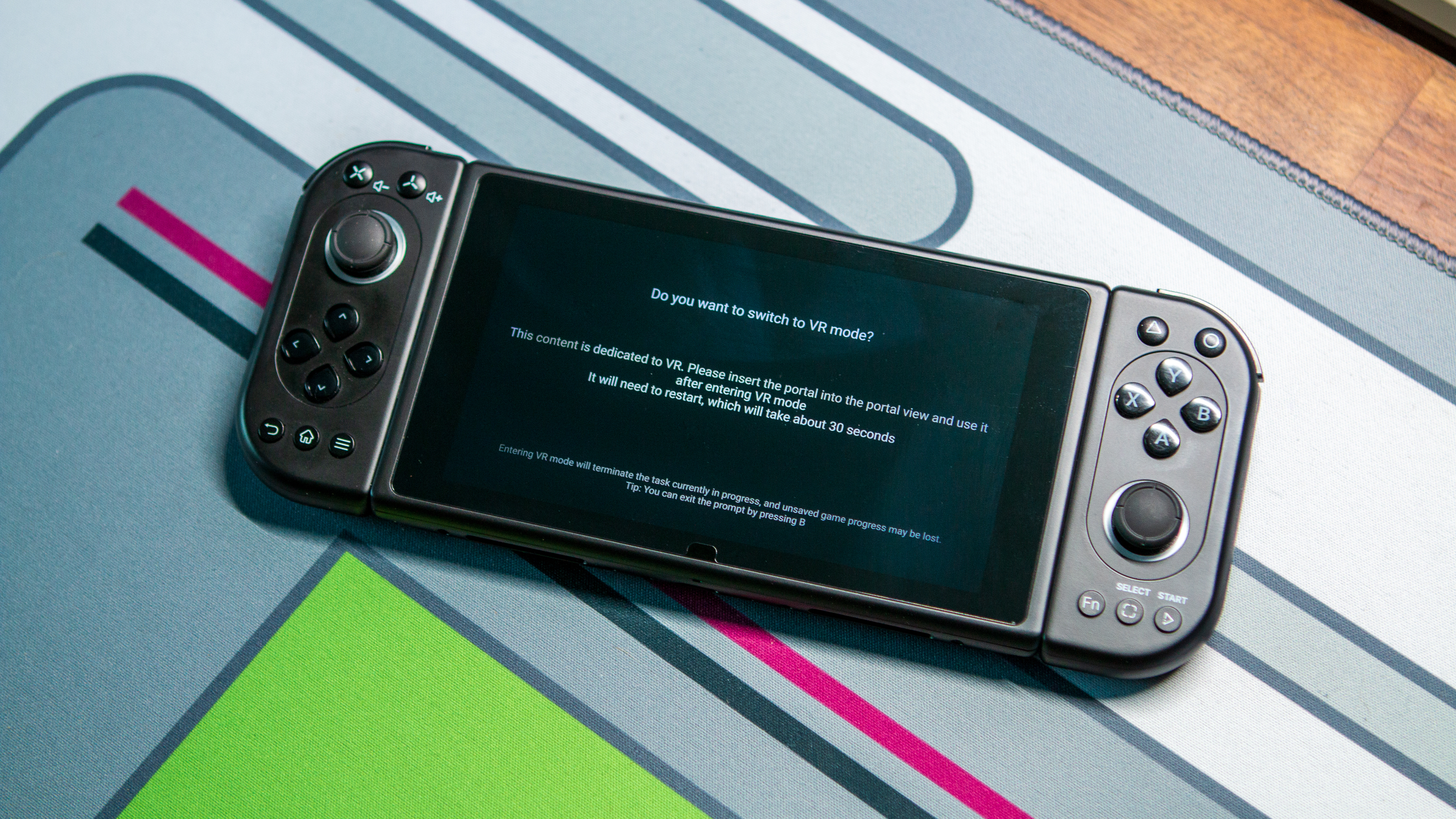
It doesn't take much to realize that the Pimax Portal is, and isn't, a competitor to the likes of the Ayaneo Pocket Air or Ayn Odin 2. On one hand, the overall hardware is incredibly solid and well-built. Having a QLED screen, even at 5.5 inches, that is capable of 4K/120Hz is phenomenal, even if you can't tell the difference on a day-to-day basis.
I can't help but feel a bit disappointed that Pimax has yet to make its VR accessories available for the Portal. I don't want to say that it's a pipedream, as some Portal owners have actually received the VR accouterments. But going back to the drawing board for the main selling point, after the handset was already released, doesn't instill a lot of confidence.
Pimax Portal: The competition
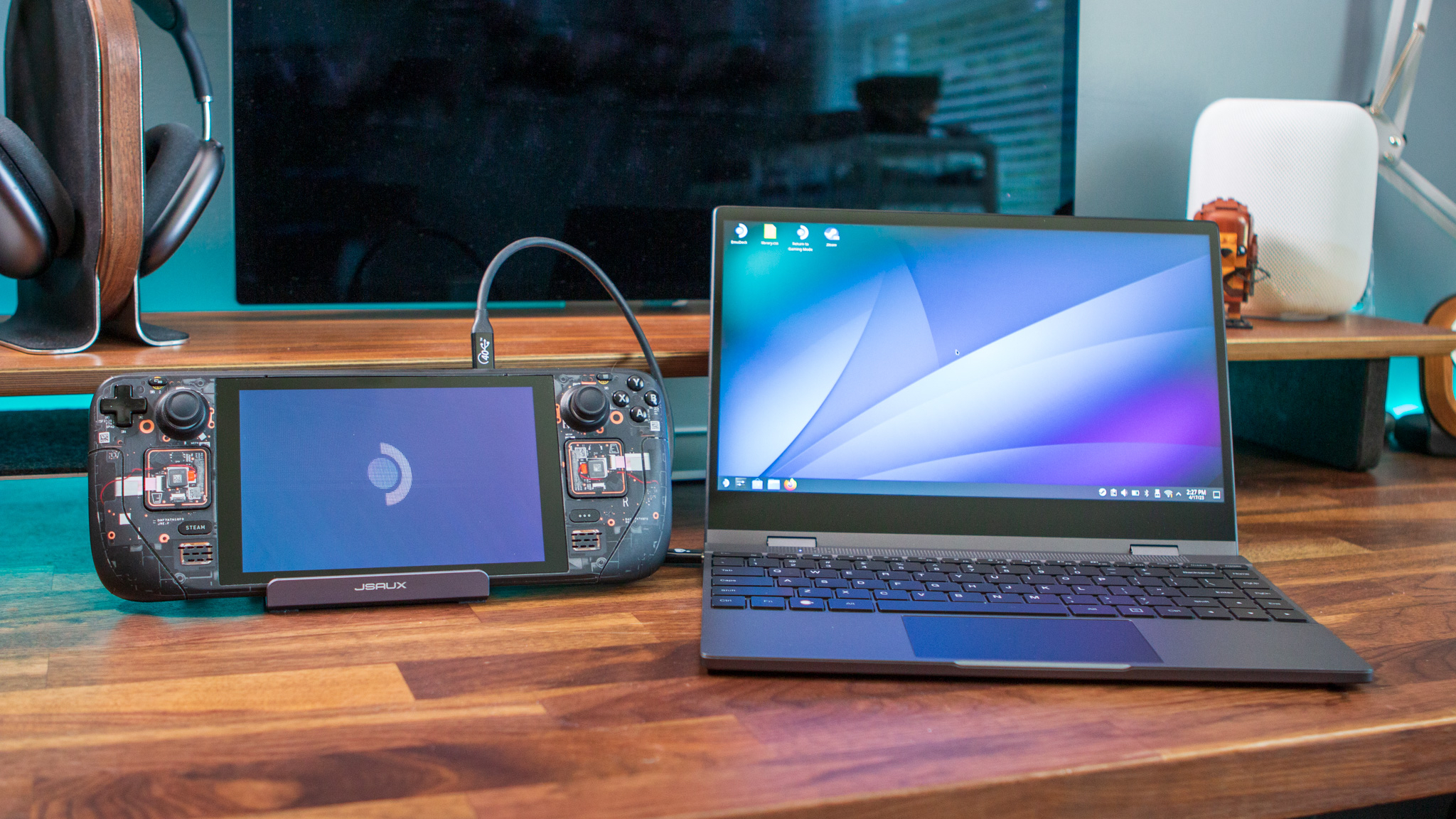
There are a couple of ways that you could try to find "competition" for the Portal. In terms of VR capabilities, the Meta Quest 2 is still being sold, runs the same processor, and has been permanently discounted to $249. It might not have all of the bells and whistles of the Quest 3, but it's still quite a bit less expensive than the Portal's base model. Even the Quest 3 is less expensive than the QLED Portal, provided that you're okay with 128GB of storage on your VR headset.
As for Android gaming handhelds, things get a bit more tedious, as there are a boatload of different options. You could go with something like the Logitech G Cloud or Razer Edge, both of which run Android and can install games and emulators from the Play Store. But there are also devices like the aforementioned Ayaneo Pocket Air, which sports an OLED display, is more comfortable, and is powered by the MediaTek Dimensity 1200.
Not to mention that with the launch of the Steam Deck OLED, Valve has dropped the price of the older Steam Deck LCD down to $349. This offers a completely different gaming experience, as you can actually play AAA titles (for the most part), and it is still one of the best gaming handhelds on the market.
The problem with these comparisons is that they aren't exactly fair. If Pimax can actually deliver on its promise to turn the Portal into a VR headset, then the Portal stands in a class all on its own. But that's a big if.
Pimax Portal: Should you buy it?
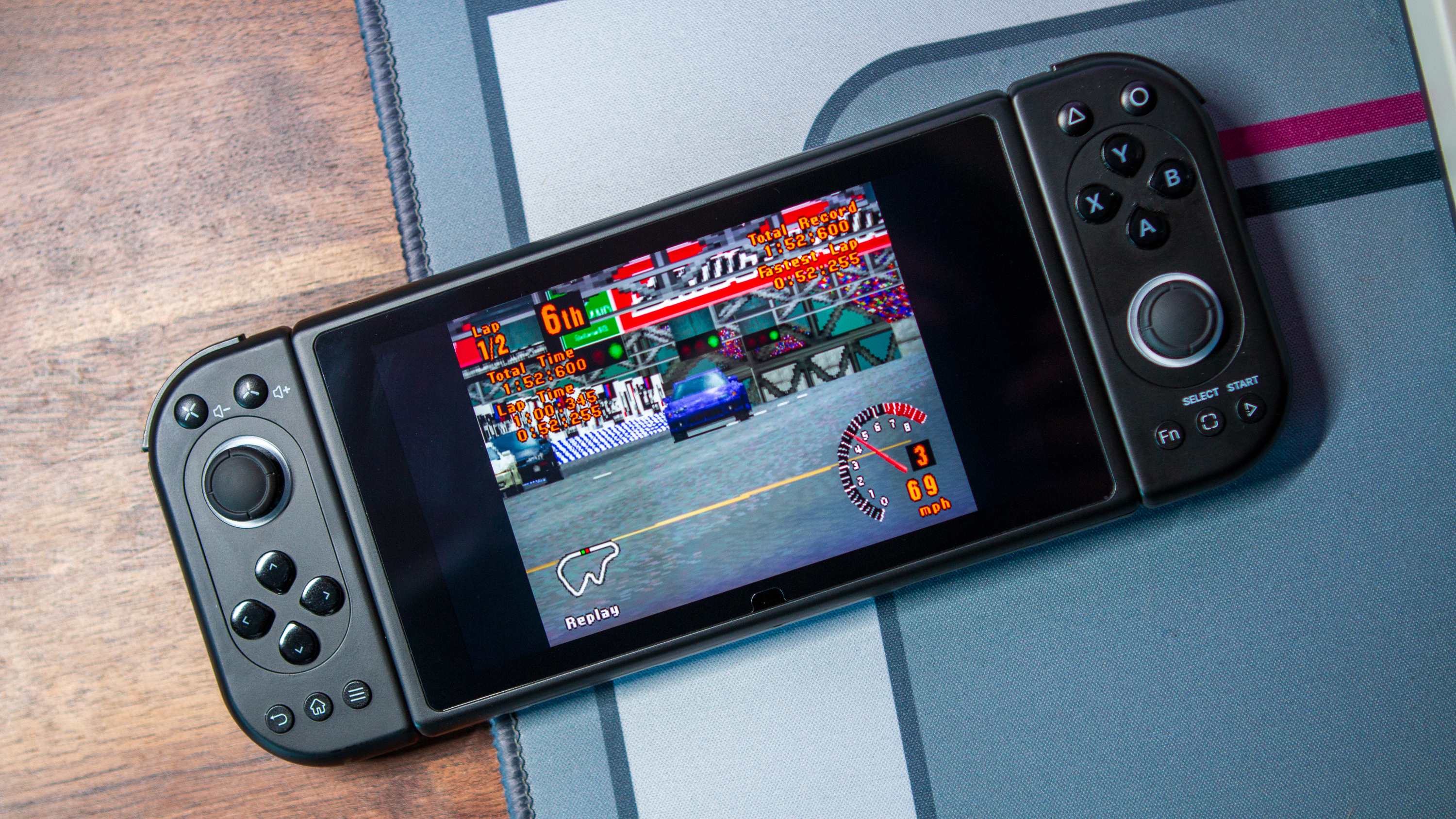
You should buy this if:
- You want a dedicated Android gaming handset that promises to turn into a VR headset.
- You're okay with tinkering to get everything set up properly.
- You want one of the more interesting gaming devices released in recent years.
You shouldn't buy this if:
- You already have something like the Steam Deck or Meta Quest 3.
- You don't want to wait for the VR aspect to be fleshed out and released.
- You're on a budget.
As I touched on in the previous section, the Portal is kind of stuck between a rock and a hard place. The handheld itself has all of the pieces needed to be turned into a VR headset, which would provide the ultimate 2-in-1 experience. However, the Portal QLED is a tough sell at $549 if you're solely looking to get a handheld gaming device.
What I would recommend is trying to figure out exactly what it is that you hope to get out of the Portal. If you really want the best of both worlds, then by all means, go for it and just keep your fingers crossed that the VR headset is released. Otherwise, you might be better suited for something like the Steam Deck, which provides a more complete gaming experience.

Andrew Myrick is a Senior Editor at Android Central. He enjoys everything to do with technology, including tablets, smartphones, and everything in between. Perhaps his favorite past-time is collecting different headphones, even if they all end up in the same drawer.
